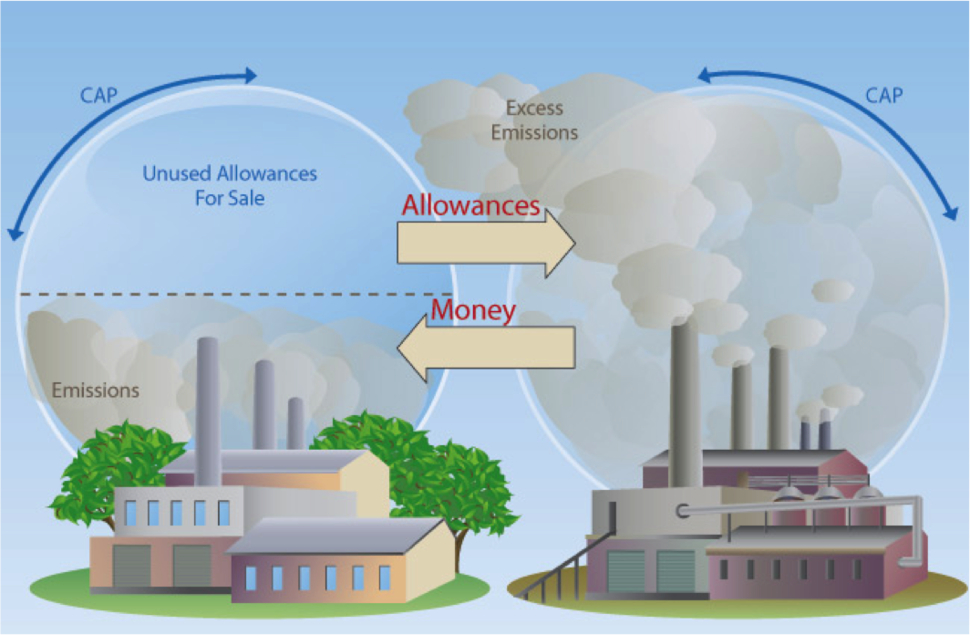According to IPCC (intergovernmental panel on climate change), global warming of more than 2 degrees Celsius would have serious consequences on our planet, such as mass extinctions, huge droughts or rising of the sea level. By the use of coal in the factories or burning gas in our cars, we exhume high amounts of greenhouse gasses into the atmosphere and thus warm the planet. According to the scientists, the global temperature has already risen by 0,85 degrees Celsius since 1880, the time of the industrial revolution.
There are many theories based on which the obligations to reduce the greenhouse gas emissions are assigned to different nations. Many people believe that the problem of climate change should be handled by some kind of international cap-and-trade system, where nations would be allocated specific amount of emission rights, which could be subsequently traded in return for cash. One of the first plans, how this could be achieved, was proposed in 2005 in Kyoto where the so-called Annex I countries (basically wealthy, developed countries) received binding emissions limits. However, not only that some important countries such as the United States refused to sign this treaty, but also the signatories have seemed not to act according to the protocol in the past years. Moreover, some non-Annex I countries (developing countries) have developed immensely in past decade and are not poor anymore; however these are not tightened by any binding obligations to reduce their emissions.
The problem of allocating the correct amount of emission rights to nations is very complex, combining different fields such as science, economics, politics or ethics. To make the issue even more complex, some countries (such as the Netherlands) would be affected by the climate change immensely, whereas other (e.g. Russia) would actually benefit from the increasing global temperature. Thus the willingness to cooperate and come to a conclusion differs among the nations.
There are several approaches towards redistribution of the emission rights:
- Status quo approach: is based on the amount of energy consumption at the time the treaty enters into force. Thus such approach favors wealthy nations, which are already developed. This approach was used in the Kyoto protocol.
- Per-nation approach: distributing equal amounts of permits to every nation. This approach seems unfair from the start, because it puts the small countries and big countries on the same level.
- Per-capita approach: each nation receives the permits based on its population. This approach seems fair in the equal distribution among all the people, who are all owners of the atmosphere and thus should all have same right to emit. On the other hand, this approach suggests rather perverse paradox, that by increasing the population, the nation will be rewarded higher number of permits; but with bigger population the overall consumption also increases.
- Redistributive approach: all rights should be given to whichever country is poorer in order to give the means to develop.
Some of these approaches seem fairer than others. However, the fairness of such treaty is not the only problem; by all means the final treaty agreed on by all the countries must also be feasible. Countries will only sign the treaty if it is in any way profitable for their nation. Therefore, although the per capita approach may seem fairer than other approaches, the wealthy nations will probably never sign such treaty; in this sense the status quo approach may be a feasible solution, although harming the poor countries.
The bottom line is that we as world population must act quickly and have a big impact otherwise we may reach the 2 degrees increase in temperature already in next decades. The questions at stake are who will should be blamed for the climate change and who will pay for the mitigation at the end? Who will be the climate change winner and who will be the climate change loser? Perhaps in December 11th 2015, which is the end of the COP21 (United Nations Conference on Climate Change) in Paris we will have some more answers to these tricky questions.
References:
Baer, P. et al (2010). Greenhouse Development Rights
COP21 (n.a.). Why 2C? http://www.cop21.gouv.fr/en/why-2c/
Posner, E. & Sustein, C. (2010). Justice and Climate Change
